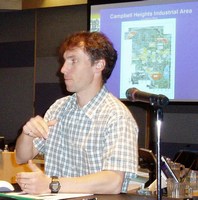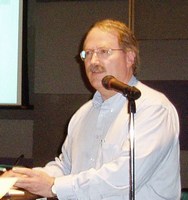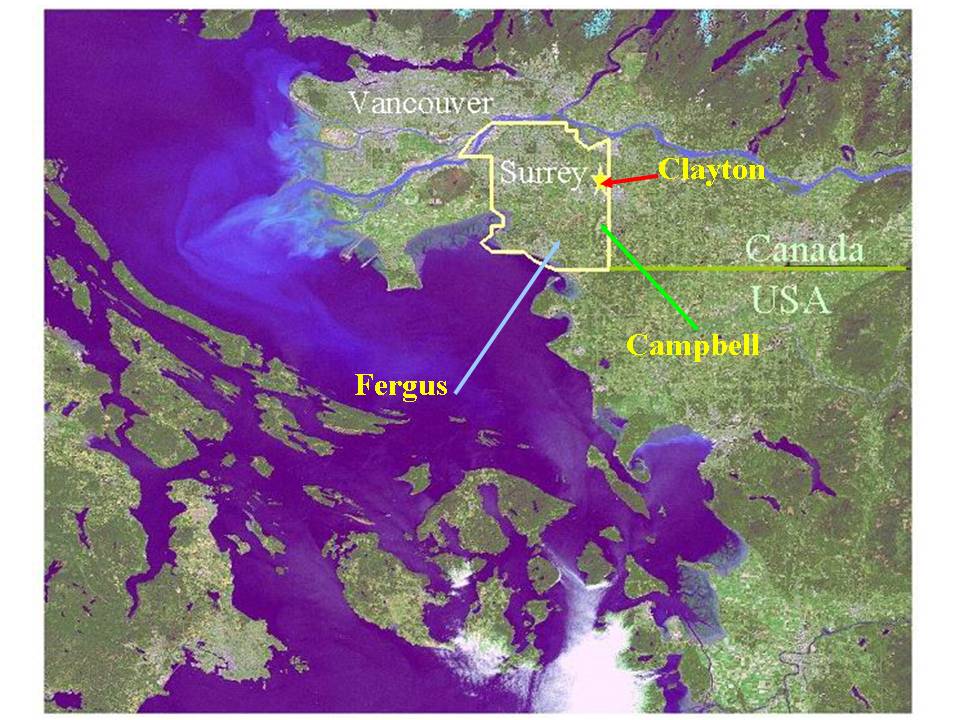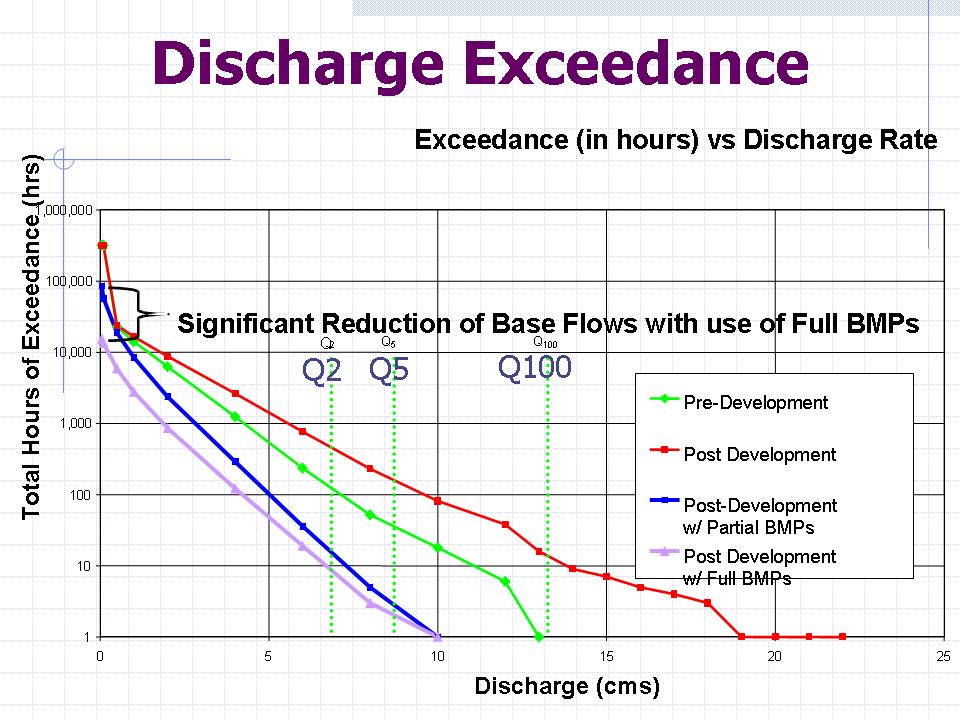Going Beyond the Guidebook: City of Surrey Showcases Vision for Green Infrastructure on the Ground
2006 Showcasing Green Infrastructure Innovation Series in Metro Vancouver
The goal of the Showcasing Innovation Series is to build regional capacity through sharing of green infrastructure approaches, experiences and lessons learned as an outcome of ‘designing with nature’. The series is a building block process — each time the objective is to raise the bar when celebrating successes in Greater Vancouver municipalities.
The Showcasing Innovation Series is organized as a workshop in the morning followed by field tour in the afternoon. The series is structured this way to create opportunities for practitioners to network and share “how to do it” experiences on the ground.
To Learn More:
In June 2006, the City of Surrey hosted the second in the series. For the complete story, click on Showcasing Innovation in the City of Surrey.
The Fergus Watershed: Beyond the Creek
 “In Showcasing Innovation in Surrey, the emphasis was on the approach the City is developing under the umbrella of the Fergus Creek Integrated Stormwater Management Plan (ISMP) to facilitate changes in how land is developed and/or redeveloped. The underlying theme was effective integration to achieve results on-the-ground”, observed Kim Stephens, Program Coordinator for the Water Sustainability Action Plan for British Columbia and moderator for the workshop portion of the Surrey event.
“In Showcasing Innovation in Surrey, the emphasis was on the approach the City is developing under the umbrella of the Fergus Creek Integrated Stormwater Management Plan (ISMP) to facilitate changes in how land is developed and/or redeveloped. The underlying theme was effective integration to achieve results on-the-ground”, observed Kim Stephens, Program Coordinator for the Water Sustainability Action Plan for British Columbia and moderator for the workshop portion of the Surrey event.
According to Paul Ham (General Manager, Engineering) of the City of Surrey:
 “By the mid-1990s, the need for change in the way we develop land was clear. The East Clayton Neighbourhood Concept Plan provided the first large-scale opportunity to ‘test’ a new approach advocated by Patrick Condon and others. This new approach, which is sometimes characterized as ‘the future is the past’, embodied a design with nature way-of-thinking about drainage”, added Ham.
“By the mid-1990s, the need for change in the way we develop land was clear. The East Clayton Neighbourhood Concept Plan provided the first large-scale opportunity to ‘test’ a new approach advocated by Patrick Condon and others. This new approach, which is sometimes characterized as ‘the future is the past’, embodied a design with nature way-of-thinking about drainage”, added Ham.
Remi Dubé, City of Surrey Drainage Planning Manager, elaborated by explaining that “Fergus is the first of the new generation of ISMPs that the City is undertaking. Our goal is to develop an array of tools under the umbrella of the Fergus ISMP. Because we wished to avoid a cookie-cutter approach that is too often an outcome  of this type of multi-year program, we challenged the consulting engineering community to demonstrate their innovation in providing us with a work plan that would actually facilitate changes in how land is developed and/or re-developed in Surrey. Jim Dumont of McElhanney rose to the challenge. He provided the City with a vision of what could be accomplished on the ground through a pragmatic approach that is under-pinned by a design with nature philosophy. The City bought into that vision.”
of this type of multi-year program, we challenged the consulting engineering community to demonstrate their innovation in providing us with a work plan that would actually facilitate changes in how land is developed and/or re-developed in Surrey. Jim Dumont of McElhanney rose to the challenge. He provided the City with a vision of what could be accomplished on the ground through a pragmatic approach that is under-pinned by a design with nature philosophy. The City bought into that vision.”
Going Beyond the Guidebook
“There is a need for a new approach to hydrologic design. A key message is that a rainfall-based approach does not work effectively. This is why I advocate a runoff-based approach. Duration of discharge is important because it links directly to stream health”, stated Jim Dumont.
Published in 2002, Stormwater Planning: A Guidebook for British Columbia formalized a science-based understanding to set performance targets for reducing rainwater runoff volumes and rates.The Guidebook formalized the Integrated Strategy for Managing the Complete Spectrum of Rainfall Events as the foundation for a “design with nature” approach to rainfall capture and runoff control. The key to implementing the strategy is that most of the annual rain volume falls as light showers.
The Fergus ISMP “goes beyond the Guidebook” because it is built around a science-based methodology that correlates runoff volume (and hence volume reduction measures) with stream health as measured by erosion and sedimentation. In short, the Fergus ISMP has taken performance target thinking to the next level of detail.
 According to Jim Dumont, “The objective in applying this refinement of the performance target methodology is to establish what level of runoff volume reduction is optimal. Continuous simulation of the rainfall-runoff response for the Fergus watershed shows, for example, that full implementation of volume reduction measures for all land uses would actually remove all the baseflow from the creek. Clearly, this outcome would be detrimental to the aquatic resource. This finding provided the impetus to determine the optimum combination of volume reduction measures, both for new development and retrofitting of existing development.”
According to Jim Dumont, “The objective in applying this refinement of the performance target methodology is to establish what level of runoff volume reduction is optimal. Continuous simulation of the rainfall-runoff response for the Fergus watershed shows, for example, that full implementation of volume reduction measures for all land uses would actually remove all the baseflow from the creek. Clearly, this outcome would be detrimental to the aquatic resource. This finding provided the impetus to determine the optimum combination of volume reduction measures, both for new development and retrofitting of existing development.”



